I don't know where to report/discuss bugs, issues, etc. Technical seemed fitting; Inform me or move the thread if needed, please.
I'm not sure it's been brought up, but the GI system creates considerable artifacts during sunny,mostly sunny, polluted, and mostly cloudy weather. Anytime the sun is out, creating an opportunity indirect illumination, there is a very noticeable triangulated breakup in the bounce light that makes it look like the normals have broken. I know that's not the case because then everything would look this way all the time. it's only present when it's sunny, and I tested further by turning GI off.
When GI is turned off though; many of the local lights(especially those under overpasses, bridges, arches, etc) have an almost solid black box around themselves cast on the nearby geometry - again, during the day. At night this issue isn't present whether GI is turned on or off because the sun gone. This is everywhere, especially outside of V's apartment.
Perhaps related; the NCART elevator.. yet again outside V's apartment. When the player approaches it; the object turns nearly solid black and not evenly. It's almost as if there is a post-processing volume (I'm using UE4 terms to describe something I can't understand, please forgive me) attempting to dim the player view of the outside when entering the elevator but this isn't working. I'm a pre-production artist, and my experience with UE4 (a completely different engine) is limited, so I wouldn't really know what terms accurately describe the systems present or not. Turning on RT lighting, alleviates the issues in certain areas to some extent, but they're still there and that's a big performance demand just to barely fix an issue that shouldn't be present.
I really love this game. I'm happy it's sold well and look forward to the team working on it more. I've seen perhaps one video on youtube even mention this briefly, so it seemed fitting to try and get eyes on this because it really does spoil the experience.
I'm not sure it's been brought up, but the GI system creates considerable artifacts during sunny,mostly sunny, polluted, and mostly cloudy weather. Anytime the sun is out, creating an opportunity indirect illumination, there is a very noticeable triangulated breakup in the bounce light that makes it look like the normals have broken. I know that's not the case because then everything would look this way all the time. it's only present when it's sunny, and I tested further by turning GI off.
When GI is turned off though; many of the local lights(especially those under overpasses, bridges, arches, etc) have an almost solid black box around themselves cast on the nearby geometry - again, during the day. At night this issue isn't present whether GI is turned on or off because the sun gone. This is everywhere, especially outside of V's apartment.
Perhaps related; the NCART elevator.. yet again outside V's apartment. When the player approaches it; the object turns nearly solid black and not evenly. It's almost as if there is a post-processing volume (I'm using UE4 terms to describe something I can't understand, please forgive me) attempting to dim the player view of the outside when entering the elevator but this isn't working. I'm a pre-production artist, and my experience with UE4 (a completely different engine) is limited, so I wouldn't really know what terms accurately describe the systems present or not. Turning on RT lighting, alleviates the issues in certain areas to some extent, but they're still there and that's a big performance demand just to barely fix an issue that shouldn't be present.
I really love this game. I'm happy it's sold well and look forward to the team working on it more. I've seen perhaps one video on youtube even mention this briefly, so it seemed fitting to try and get eyes on this because it really does spoil the experience.
Attachments
-
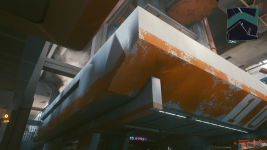 GIArtifacts (1).png4.4 MB · Views: 120
GIArtifacts (1).png4.4 MB · Views: 120 -
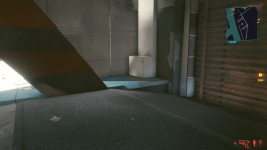 GIArtifacts (2).png4.5 MB · Views: 122
GIArtifacts (2).png4.5 MB · Views: 122 -
 GIArtifacts (3).png4.9 MB · Views: 105
GIArtifacts (3).png4.9 MB · Views: 105 -
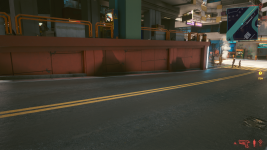 GIArtifacts (5).png4.6 MB · Views: 93
GIArtifacts (5).png4.6 MB · Views: 93 -
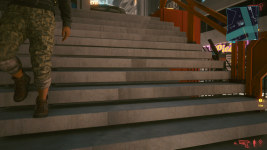 GIArtifacts (6).png4.3 MB · Views: 91
GIArtifacts (6).png4.3 MB · Views: 91 -
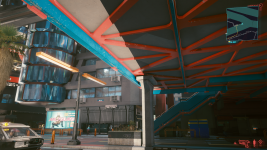 GIArtifacts (7).png4.7 MB · Views: 89
GIArtifacts (7).png4.7 MB · Views: 89 -
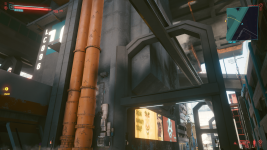 GIArtifacts (8).png4.5 MB · Views: 100
GIArtifacts (8).png4.5 MB · Views: 100 -
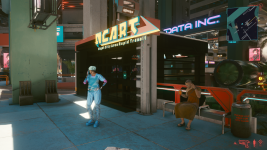 Volume Error.png4.7 MB · Views: 88
Volume Error.png4.7 MB · Views: 88 -
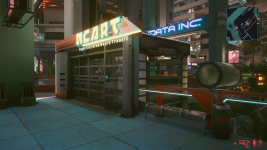 VolumeErrorRT.png4.7 MB · Views: 124
VolumeErrorRT.png4.7 MB · Views: 124



